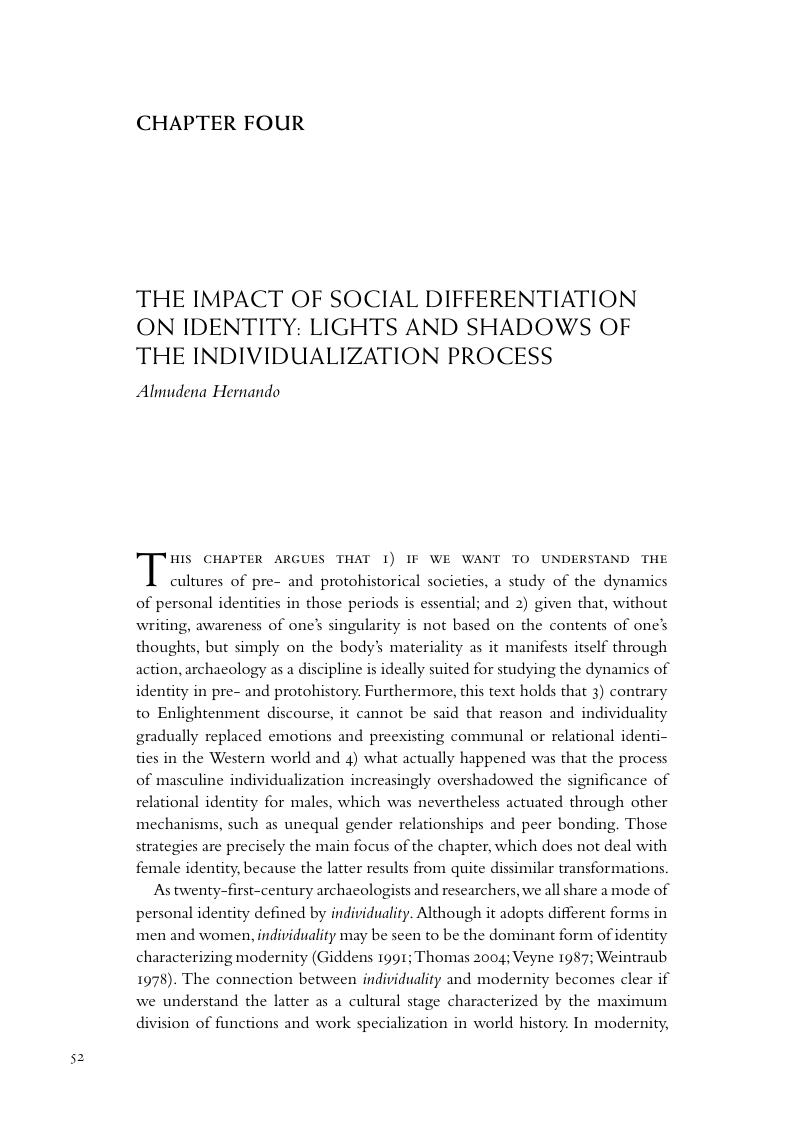Book contents
- Eurasia at the Dawn of History
- Eurasia at the Dawn of History
- Copyright page
- Contents
- Figures
- Tables
- Contributors
- Introduction
- Part I Between Myth and Logos
- Chapter Two Cognitive Archaeology and the Making of the Human Mind
- Chapter Three History of Writing, History of Rationality
- Chapter Four The Impact of Social Differentiation on Identity: Lights and Shadows of the Individualization Process
- Part II The Development of Social Differentiation
- Part III Approaching Social Complexity
- Part IV Urbanism through the Ages: Concepts, Models, and Definitions
- Part V Ancient Civilizations at the Turn of the Axis
- Part VI Times of Connectivity: The Mediterranean on the Move
- Part VII Early Urban Cultures from South to North
- Part VIII Changing Symbols, Changing Minds?
- Index
- References
Chapter Four - The Impact of Social Differentiation on Identity: Lights and Shadows of the Individualization Process
from Part I - Between Myth and Logos
Published online by Cambridge University Press: 28 March 2017
- Eurasia at the Dawn of History
- Eurasia at the Dawn of History
- Copyright page
- Contents
- Figures
- Tables
- Contributors
- Introduction
- Part I Between Myth and Logos
- Chapter Two Cognitive Archaeology and the Making of the Human Mind
- Chapter Three History of Writing, History of Rationality
- Chapter Four The Impact of Social Differentiation on Identity: Lights and Shadows of the Individualization Process
- Part II The Development of Social Differentiation
- Part III Approaching Social Complexity
- Part IV Urbanism through the Ages: Concepts, Models, and Definitions
- Part V Ancient Civilizations at the Turn of the Axis
- Part VI Times of Connectivity: The Mediterranean on the Move
- Part VII Early Urban Cultures from South to North
- Part VIII Changing Symbols, Changing Minds?
- Index
- References
Summary

- Type
- Chapter
- Information
- Eurasia at the Dawn of HistoryUrbanization and Social Change, pp. 52 - 64Publisher: Cambridge University PressPrint publication year: 2017



